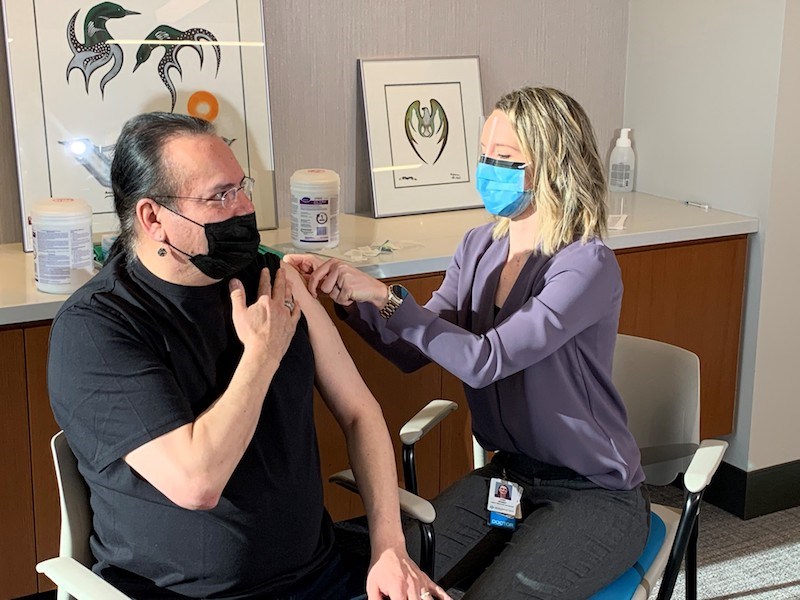The one year plus since COVID-19 arrived in Manitoba has been a time of challenges, advances and realizations for Northern Manitoba First Nations as well as those who are tasked with helping to provide them services.
Speaking with the Nickel Belt News earlier in March, Manitoba Keewatinowi Okimakanak (MKO) Grand Chief Garrison Settee said the pandemic period has been both fast and slow.
“It seems like it’s been an eternity but at the same time things have kind of flown by,” Settee said. “When you’re engaged 95 per cent of the time engaged in handling this pandemic and supporting First Nations it really gets involved and time flies by in that sense but at the same time, when you are forced to stay home in the confines of your own territory, your own place, it makes it harder for a lot of our people up north. It adds a lot of stress to an already exasperating situation. People want to get through this COVID and they want it to go away.”
The pandemic has been slightly different in Northern Manitoba than in other parts of the province. The first case in the region was detected March 29, 2020, with two more positive tests in the next several days. The next positive test didn’t come until late August and it wasn’t until October that the number of cases started multiplying. In 2021, the pace accelerated and the region soon passed every other health region except Winnipeg for the number of cases. As of March 29 of this year, there had been nearly 5,900 in total.
“Even right now, communities are still experiencing outbreaks,” Settee noted.
One thing that has become abundantly clear to everyone over the course of the pandemic, even if it was already known by most people within the Northern Regional Health Authority boundaries long before most residents had heard of Wuhan, China, is that the health care system is not serving the needs of residents, particularly those in First Nations. Rather than protecting vulnerable people, it may actually have put them at greater risk.
“I think it’s safe to say that a lot of those who have contracted the coronavirus was because they went to a medical appointment,” Settee said. “People got sick when they went to go receive medical attention. That’s what happens when you have a system that forces people to move around and travel to Winnipeg and back to the north. A lot of that caused the virus to come back to First Nations. If it wasn’t that kind of system, we would probably have avoided a lot of that hardship. That is outmoded policy that should be changed. There’s got to be a better way, a more efficient way to take care of our people in the north.”
On the positive side, the crisis has highlighted the leadership abilities that exist in First Nations and helped Indigenous leaders to successfully lobby for their rightful places on decision-making bodies.
“I think that we have asserted ourselves as equal partners and making moves to deconstruct long outstanding systems that are not adequate for First Nations,” said Settee. “This pandemic has made us stronger and it has brought out the best in our communities. It has brought out the best in our leaders. They have been strong and committed and the communities, the First Nations, are very resilient.”
Although First Nations have been among the hardest-hit communities in the north as a result of COVID-19, with several having had to ask for military assistance to deal with outbreaks, there is a sense of optimism looking forward because of vaccines.
“The second wave has done a lot of damage but I think that with the vaccinations that have been given to First Nations people, I think that there’s a sense of hope and optimism that we will get through this together and I’m looking forward to that,” said Settee, who received his first immunization shot from vaccine task force medical lead Dr. Joss Reimer on March 19.




